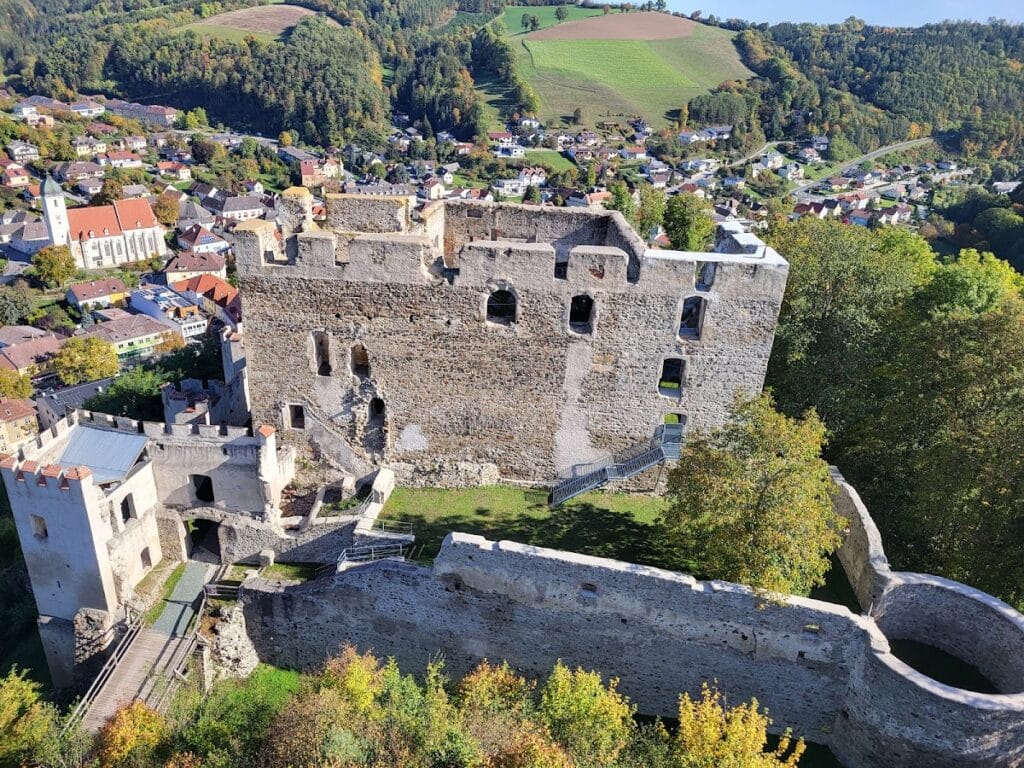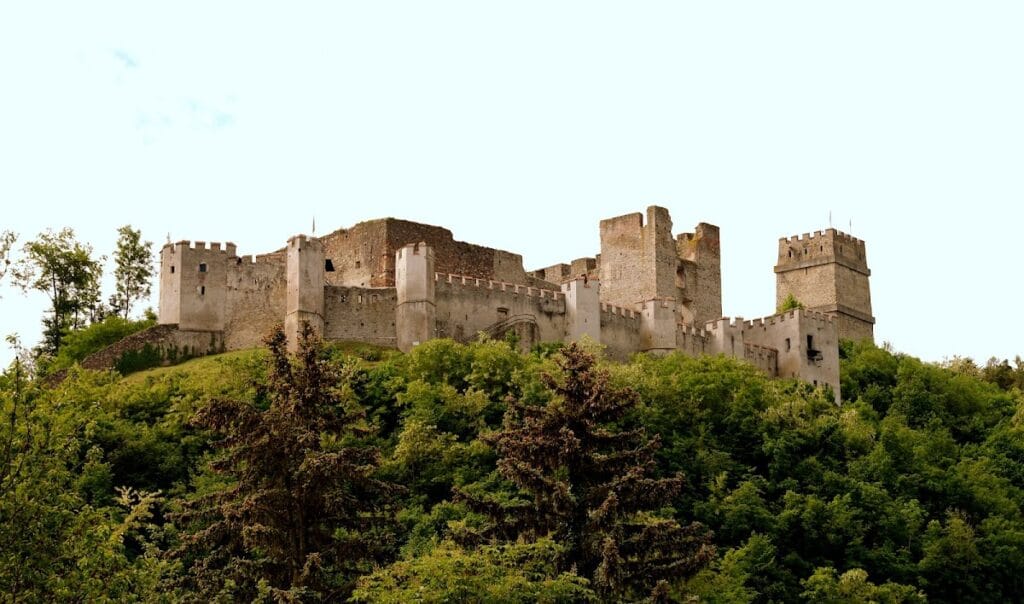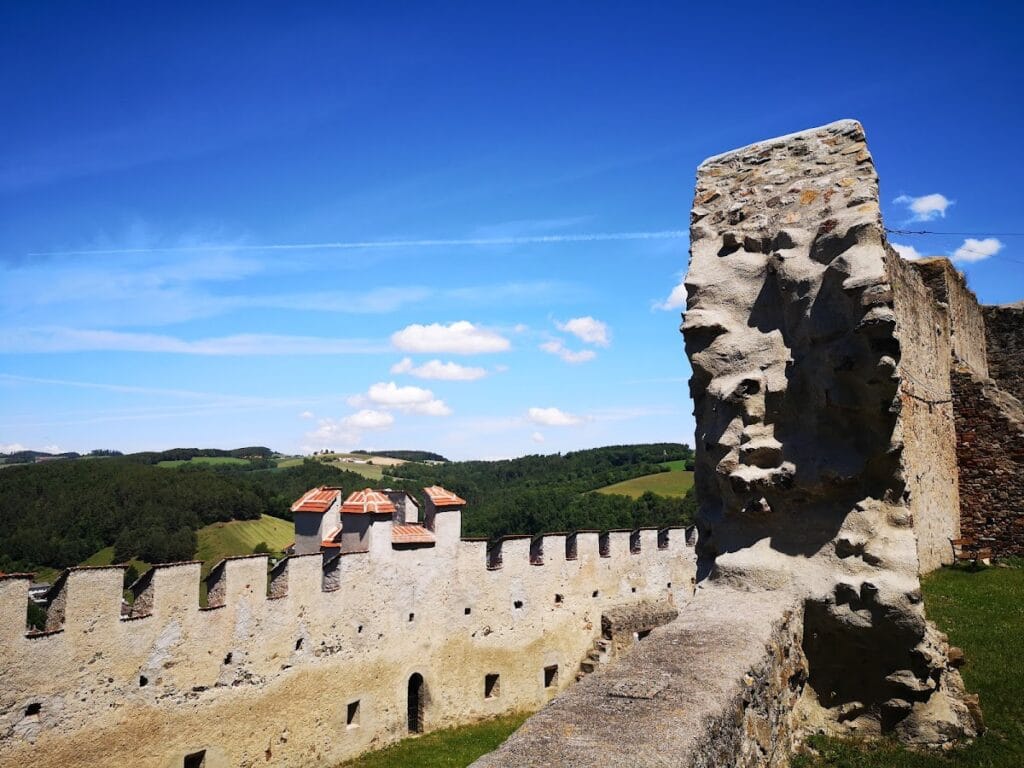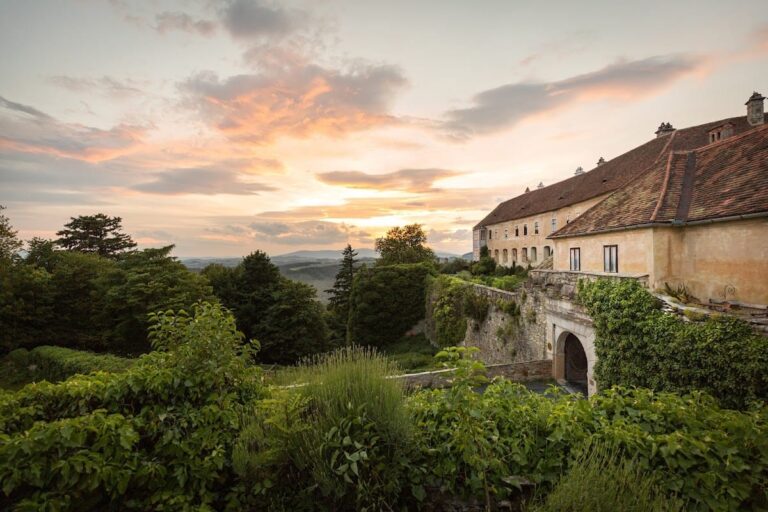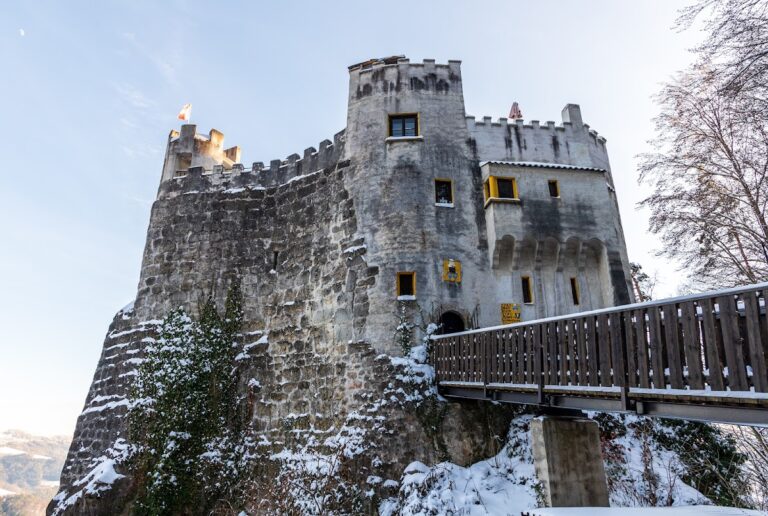Burgruine Kirchschlag: A Medieval Hill Castle in Austria
Visitor Information
Google Rating: 4.7
Popularity: Low
Official Website: www.kirchschlag-bw.gv.at
Country: Austria
Civilization: Unclassified
Site type: Military
Remains: Castle
History
Burgruine Kirchschlag is a medieval hill castle located in the town of Kirchschlag in der Buckligen Welt, Austria. It was built in the 12th century by local nobles to protect the eastern border of their territory. The castle was strategically constructed on the Schlossberg, a hill rising approximately 480 meters above sea level, and it was closely linked to the town through a fortified ring wall.
The castle’s early history includes several phases of construction and shifting ownership among prominent noble families. Following its initial foundation, the castle suffered partial destruction during a noble revolt against Duke Friedrich the Fair in the early 14th century. Between 1320 and 1325, the Pottendorfer family undertook substantial rebuilding efforts, shaping much of the castle’s form that would endure in later centuries.
Throughout the late medieval and early modern periods, Burgruine Kirchschlag remained a significant defensive stronghold. It passed through the hands of the Styrian Lords of Wildon, the Kuenringers, the Güssingers, the Pottendorfers, the Puchheimers, and finally the Hungarian Counts Pálffy. Notably, King Matthias Corvinus of Hungary held lordship over the castle until it was reconquered by Emperor Maximilian I after Matthias’s death.
The fortress withstood numerous military challenges; it survived two major Turkish sieges in 1529 and 1683, providing refuge to the local population. Other hostile encounters included raids by Haiduks in 1605, attacks by Hungarian rebel leader Gábor Bethlen in 1621, and the Kuruc uprisings in 1703. These episodes highlight the castle’s ongoing strategic importance through several centuries of conflict.
Around the mid-17th century, Burgruine Kirchschlag’s decline began as its noble residents shifted their focus. Hans Christoph III von Puchheim constructed a manor house within the town and moved his primary residence there, signaling a reduced military role for the castle. Subsequently, the Pálffy family also relocated their seat to Burg Krumbach, a better-preserved fortress nearby. This transition led to the gradual decay of Kirchschlag as a residence and defensive site.
After the political and social changes following 1848, the castle changed ownership multiple times. Ultimately, it was acquired by the municipality of Kirchschlag in the 20th century. While detailed records of excavation or restoration are limited, some preservation and maintenance efforts have been carried out in recent decades to stabilize and present the ruins.
Remains
Burgruine Kirchschlag is positioned on a hill rising about 80 meters above the surrounding landscape, making use of natural elevation for defense. The castle was originally part of a larger fortified complex that included a ring wall connecting the stronghold to the town below. This created a continuous defensive barrier, integrating the settlement and the fortress into a single protected area.
The surviving ruins primarily reflect the extensive reconstruction carried out by the Pottendorfer family in the early 14th century. Earlier layers of construction have not left visible remains above ground. The castle courtyard and various adjoining buildings were enclosed within the ring wall, forming the heart of the complex, though specific details about their size and arrangement remain undocumented.
One of the most prominent features still standing is the bergfried, a main tower often used as a last refuge. This tower, also known locally as the “Feuerturm” (fire tower), stands about 22 meters tall on a small rise roughly 50 meters southwest of the castle entrance. The bergfried served as an observation point and defensive stronghold, signaling fires or assaults and controlling the surrounding area. Today, it functions as a viewing platform, offering panoramic views of the ruin and its environs.
The castle walls, constructed of stone and maintained in parts through partial restoration, give a clear impression of the site’s medieval character. The ruins remain accessible, with informational display panels in several languages installed to provide historical context. Overall, the preservation efforts have kept key structural elements intact, allowing visitors and researchers to appreciate the defensive architecture and historical significance of Burgruine Kirchschlag.
In addition to its historical role, the castle site has served as a venue for cultural events in recent times, including an annual Advent market attracting thousands of visitors and, in previous years, a summer rock festival. This use underscores the continuing cultural connection between the community and the castle ruins.
